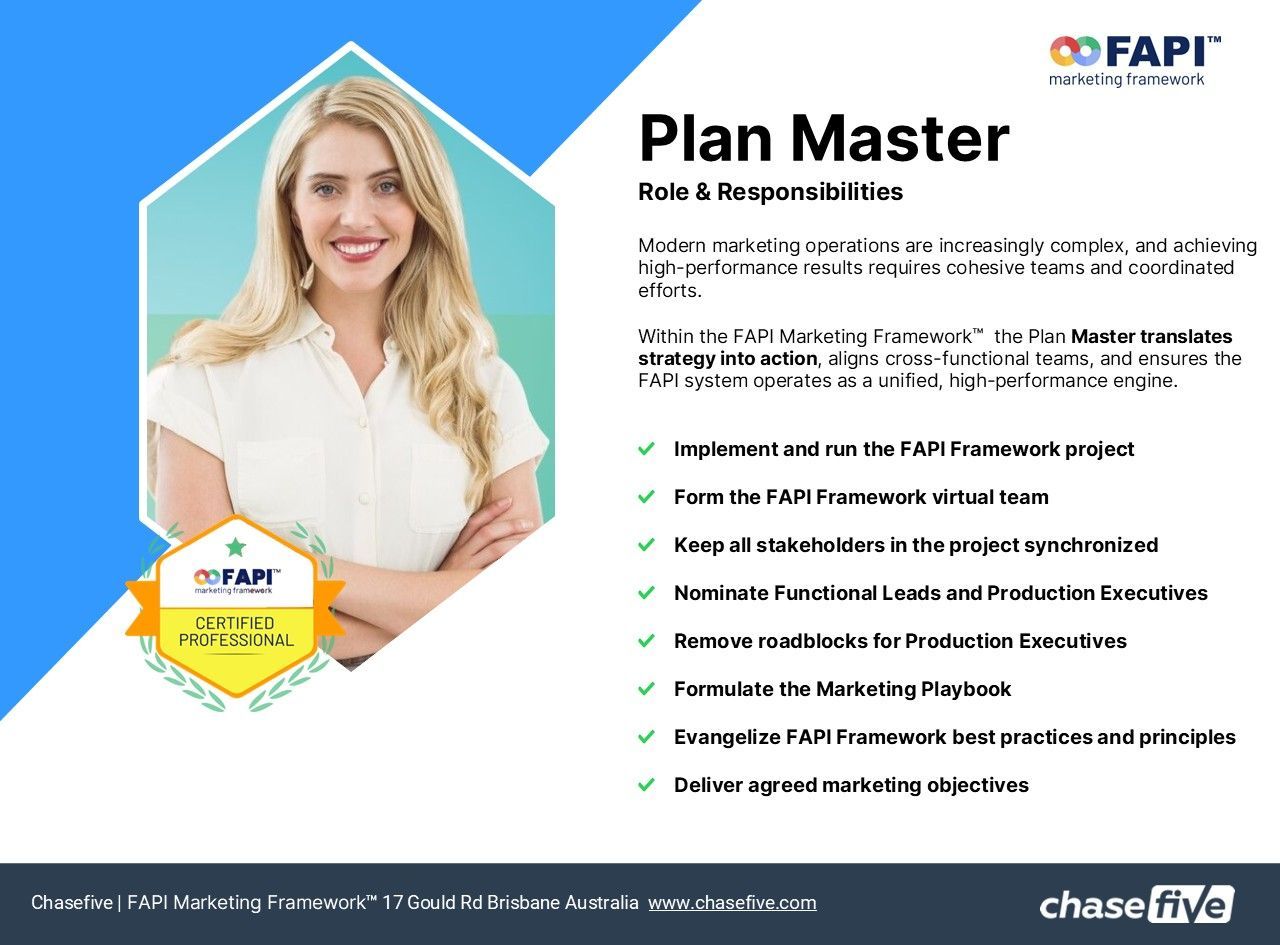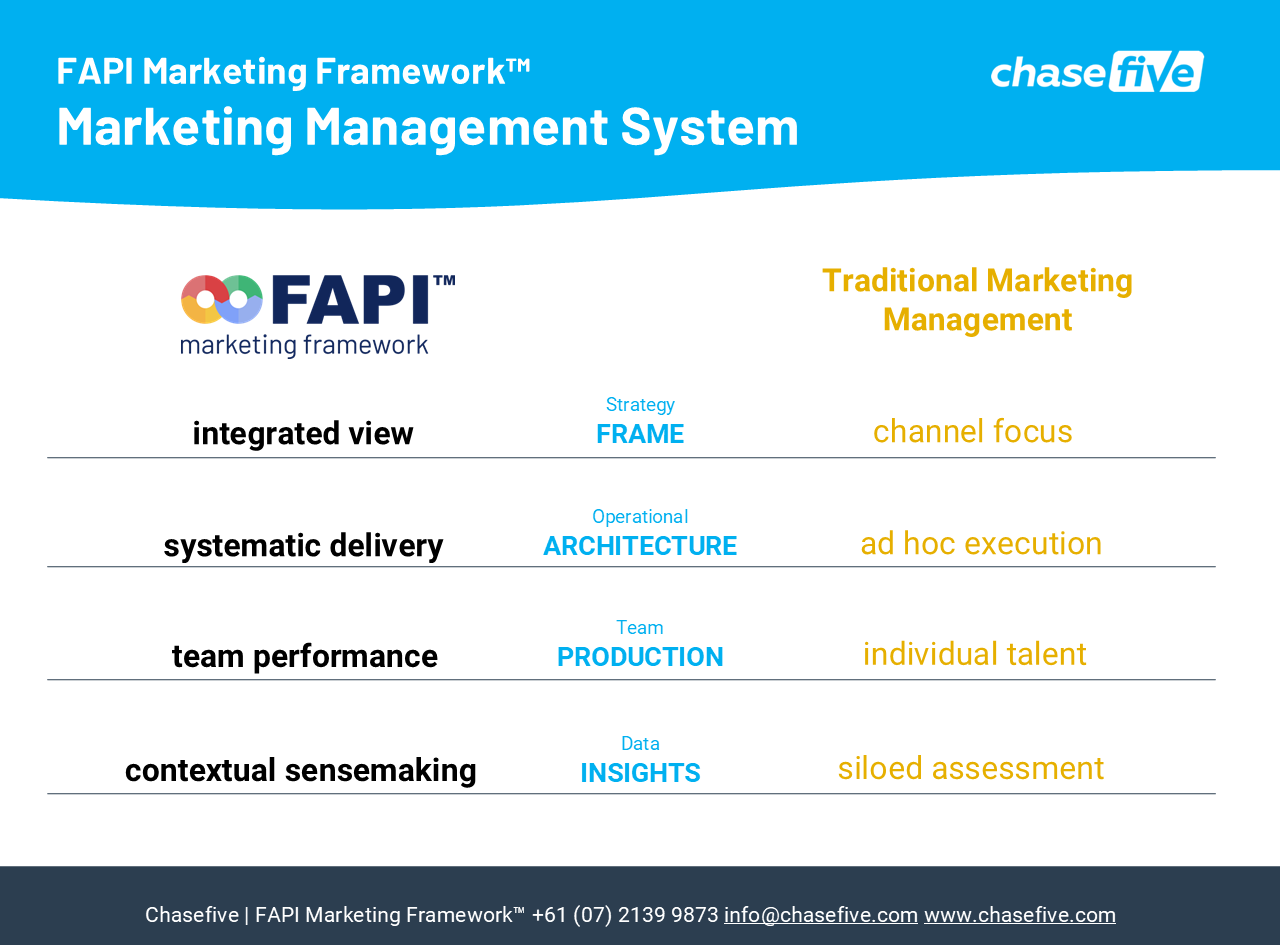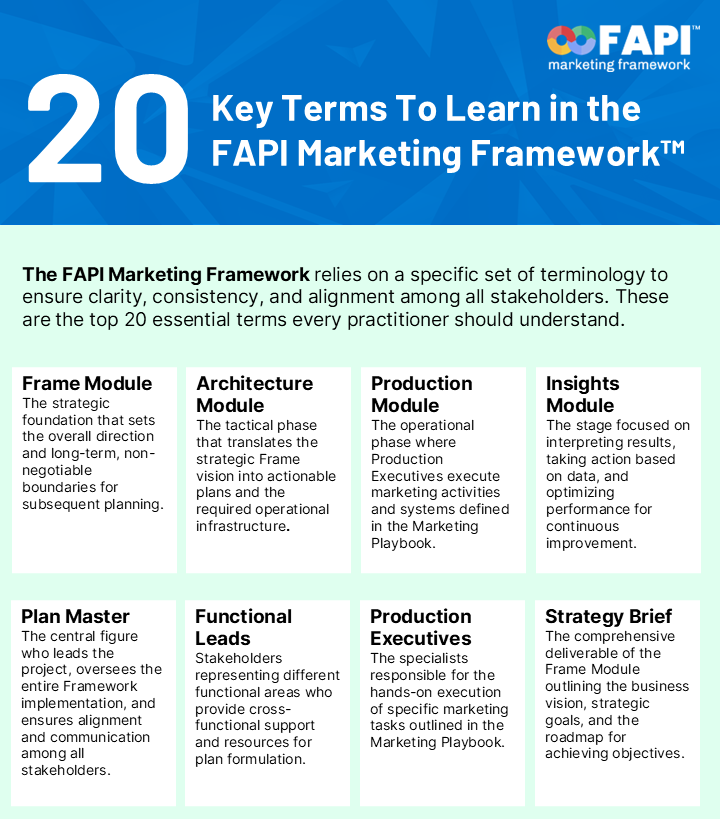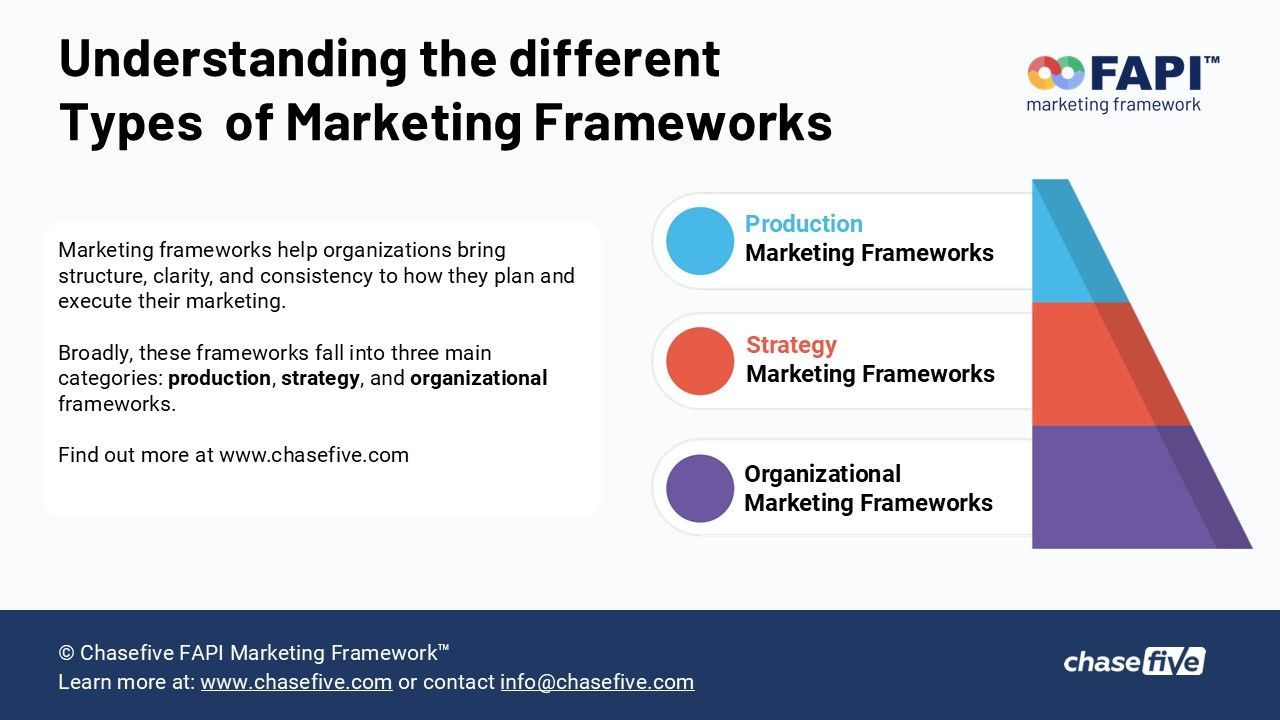Marketing production hierarchy diagram, synchronising marketing execution through operational stages
The FAPI Marketing Framework defines a clear hierarchy of terms, particularly regarding the relationship between the user journey, campaigns, and activities, ensuring a structured approach from strategic planning to tactical execution. This hierarchy is crucial for maintaining alignment between marketing efforts and overarching business strategy.
1. User Journey (Phases)
The user journey (also called the user lifecycle) is the end-to-end path a person follows as they discover a product, service, or brand. It’s a foundational concept in the Architecture Module.
Each company defines where the journey starts and ends, which affects how activities are built and monitored across the experience. Common phases used are:
- Awareness (or Reach): Getting the brand noticed.
- Validation (or Engage): Users validate claims and develop curiosity.
- Consideration: Users seek detailed information and explanations.
- Intent (or Engage): Users are motivated to take action.
- Commitment (or Conversion): Users make a purchase or tangible investment.
- Activation & Growth (or Nurture): Retain customers, drive repeat business, and increase lifetime
2. Campaigns
Campaigns represent coordinated activities centred around a single concept and theme to form an integrated marketing communication. They sit within the user journey phases.
In the FAPI Marketing Framework, "primary campaigns" are considered strategic and are defined in the Frame Module, making them mission-critical, non-negotiable, and long-term. Examples include Black Friday or Christmas campaigns for an e-commerce business, which are crucial for a large percentage of revenue.
A campaign delivers a message created to communicate with potential customers at each phase of the customer journey.
Production teams and agencies do not create these strategic campaigns; they receive campaign briefs from the strategic marketing leadership team.
Campaigns are conceived at the strategy level, and a campaign conceived wrongly at this stage cannot be redeemed later.
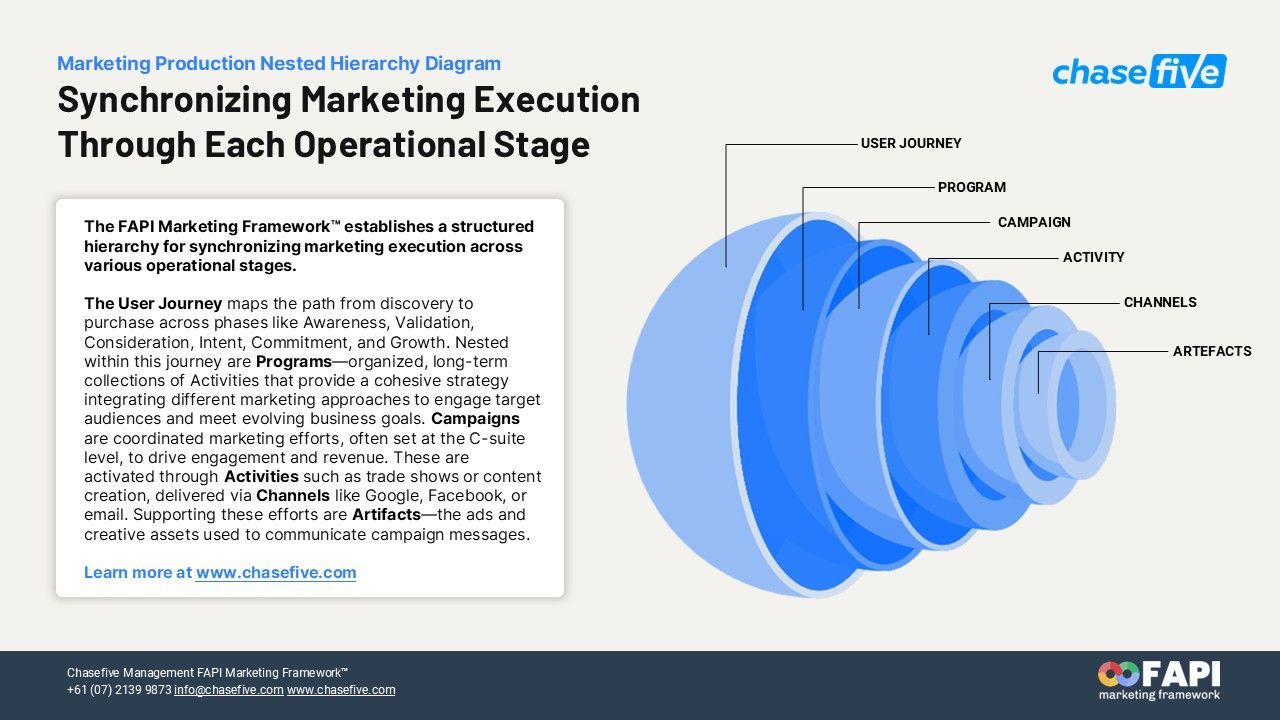
3. Programs
Marketing Programs are strategic, long-term, and often ongoing initiatives, developed to support a specific user journey phase. They represent a cohesive strategy that integrates different marketing Activities and tactics to engage a target audience around an organized theme.
A loyalty club is an example of a marketing program as it's an ongoing, structured initiative designed to retain existing customers and increase their lifetime value through exclusive rewards, offers, and communication.
4. Activities
Activities are deployed to deliver the campaign message to potential customers at each phase of the user journey. They are the tangible outputs of the marketing work in the Production Module.
Marketing activities translate strategic and planning efforts into tangible actions that engage the target audience. An example includes the organization of all work required for participation in trade shows and conferences throughout the year. The Production Module in the FAPI Framework focuses on executing the activities according to the Marketing Playbook, adhering to timelines and budgets.
5. Channels
Channels (or "marketing channels") are the media selected explicitly for the activities. These are specific advertising platforms or publishers, such as Google, Facebook, email, or TV advertising.
It is important to distinguish "channels to market" (the strategic overall route for products/services to reach customers) from "marketing channels" (the tactical advertising platforms). Strategic channels to market are defined in the Frame Module.
6. Artifacts (Ads, Copy, Creative Assets)
These are the specific advertisements, copy, and creative assets created within each channel to deliver the campaign message to the market. They are the most granular level of execution.
Marketing production hierarchical flow
The FAPI Framework establishes a top-down flow:
1. User Journey Phases define the overall customer experience segments.
2. Campaigns are strategic messages designed for specific user journey phases, determined at the C-suite level in the Frame Module.
3. Programs. Marketing Programs are strategic, long-term initiatives aligned to specific user-journey phases that integrate activities and tactics around a clear theme
4. Activities are the specific actions taken to implement these campaigns, guided by the Marketing Playbook in the Production Module.
5. Channels are the media platforms used to execute these activities.
6. Artifacts (e.g., ads, creative) are the detailed content deployed on these channels.
This structured approach ensures that every marketing effort, from the highest strategic vision to the smallest tactical action, is interconnected and aligned with the company's overall business objectives. The framework emphasizes that campaigns are created for customers, and the message should be at the center of marketing production, rather than solely focusing on channels and devices.
Learn more about marketing production in the FAPI Marketing Framework Academy portal. Register free.
